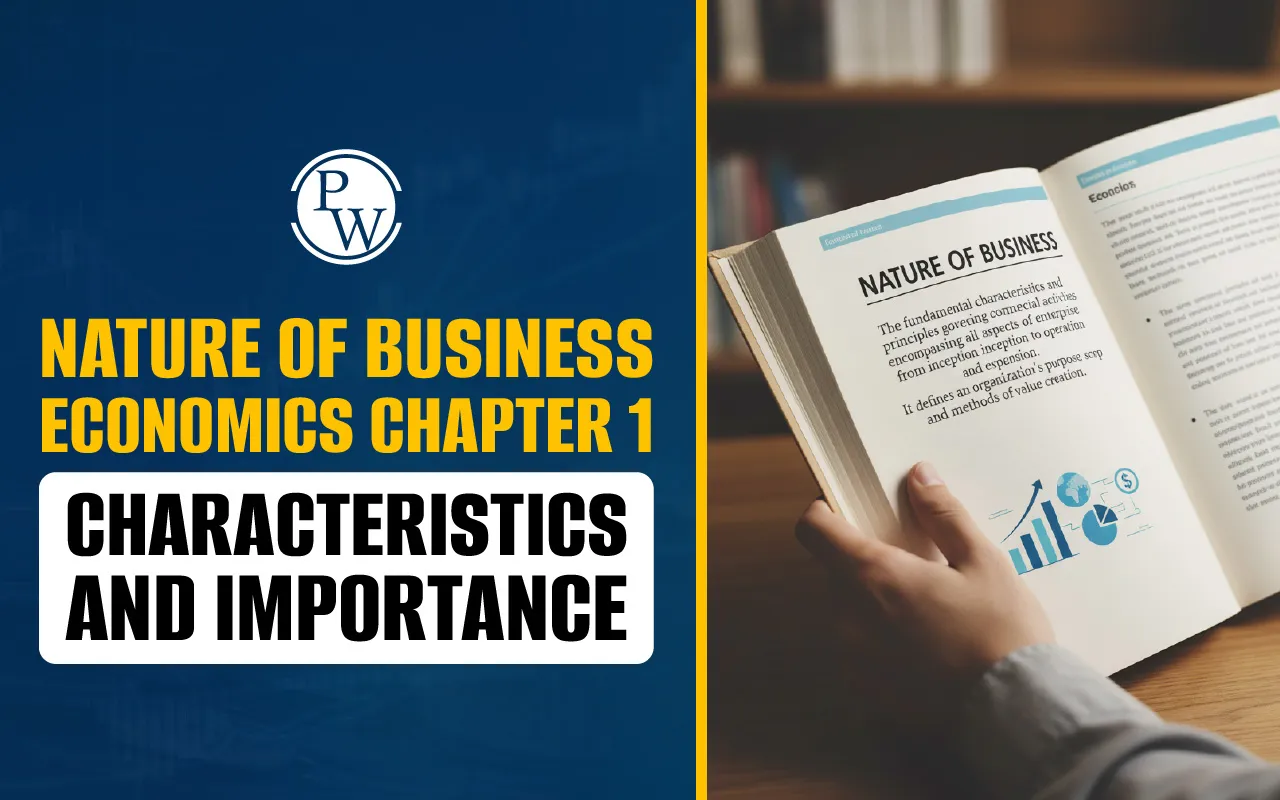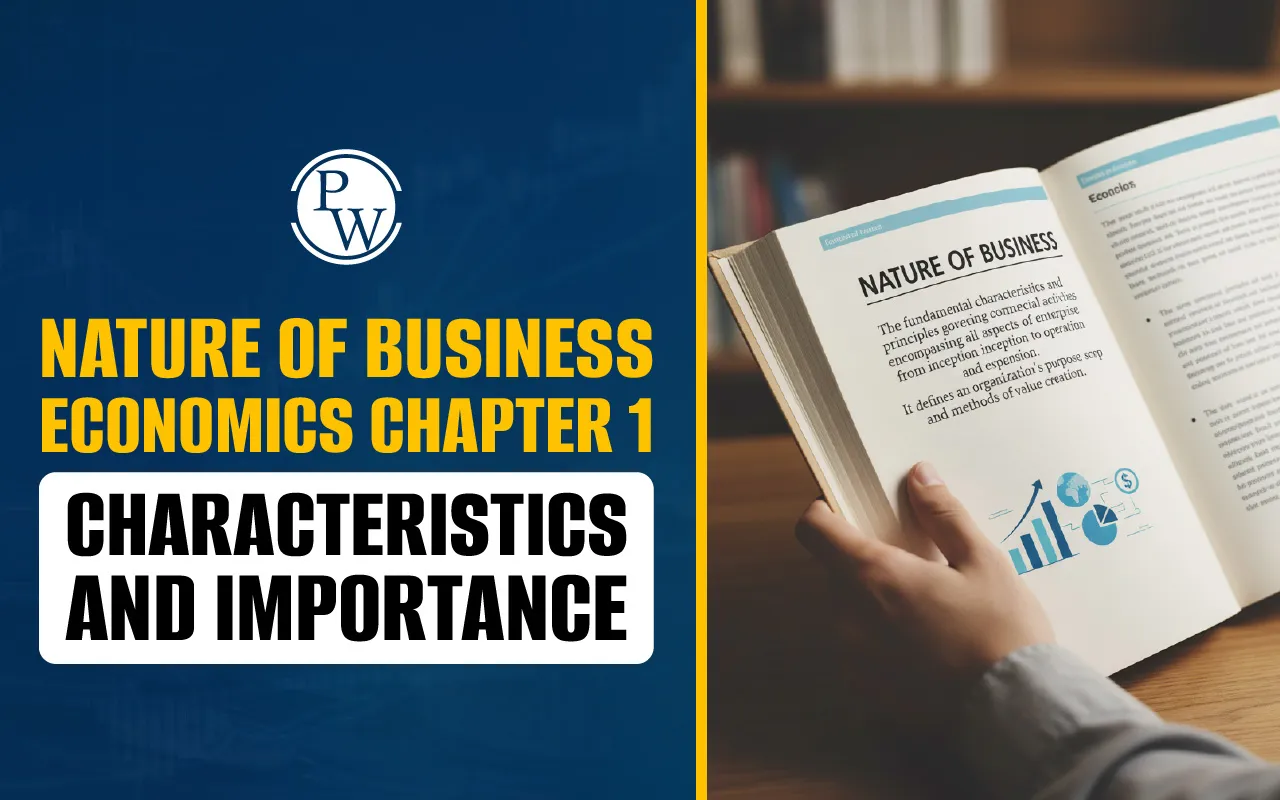

Nature of Business Economics Chapter 1: The study of Business Economics helps us understand how businesses make decisions in the real world. The Nature of Business Economics Chapter 1 explains how economic principles can be applied to solve business problems. It combines knowledge from Microeconomics and Macroeconomics to guide managers in decision-making. Below, we will cover the Nature of Business Economics Chapter 1, its characteristics, scope, approaches, and importance in a business environment.
Nature of Business Economics Chapter 1
The Nature of Business Economics Chapter 1 is focused on applying economic logic and tools to real-life business decisions. While it mainly uses Microeconomic concepts to study individual firms, it also considers the broader economic environment through Macro analysis. Businesses operate in complex economic conditions, and the Nature of Business Economics Chapter 1 helps managers bridge the gap between economic theory and practical decisions. Below, we’ve mentioned the Key points about the Nature of Business Economics Chapter 1:
- It studies how businesses allocate scarce resources efficiently.
- It considers both internal factors (like costs and production) and external factors (like inflation and interest rates).
- It combines science and art by using systematic methods while applying them practically.
- It is pragmatic and interdisciplinary, incorporating tools from mathematics, statistics, accounting, finance, and management.
Characteristics of Business Economics
The Characteristics of Business Economics help us understand how this subject functions in business decisions. The Nature of Business Economics Chapter 1 has certain features that make it unique and practical. Below, we’ve mentioned the characteristics of business economics:
-
Science in Nature: Business Economics uses scientific methods to analyze cause and effect relationships in business decisions.
-
Based on Microeconomics: It focuses mainly on individual firms and consumer behavior.
-
Includes Macro Analysis: It studies the effect of economic variables like inflation, employment, and government policies on businesses.
-
Practical and Artistic: It is both theoretical and practical, applying economic principles to real-world problems.
-
Use of Market and Enterprise Theory: Business Economics studies the firm and resource allocation in a private enterprise system.
-
Interdisciplinary Approach: Combines tools from statistics, operations research, management, and finance for decision-making.
-
Normative and Prescriptive: While it uses positive analysis to understand economic conditions, it mainly guides managers on what actions to take.
Check, Also: INTRODUCTION TO BUSINESS ECONOMICS CHAPTER 1
Scope and Focus of Business Economics
The Scope and focus of Business Economics show the areas where businesses apply economic analysis. The Nature of Business Economics Chapter 1 helps in understanding both operational and strategic aspects of a business.
| Scope and Focus of Business Economics | |
| Scope and Focus of Business Economics | Description |
| Internal/Operational Issues | Deals with costs, production, pricing, and decision-making within the firm. |
| External/Environmental Issues | Examines the impact of inflation, interest rates, taxation, government policies, and economic growth on business. |
| Managerial Perspective | Helps managers make informed decisions to achieve organizational goals. |
| Microeconomic Focus | Concentrates on individual firms, consumer behavior, and resource allocation. |
| Strategic Planning | Provides insight for long-term planning considering economic trends. |
What is the Positive vs the Normative Approach in Business Economics?
The Positive vs. Normative Approach in Business Economics explains how economic analysis is used in decision-making. While positive economics describes “what is,” normative economics prescribes “what should be.” The Nature of Business Economics Chapter 1 integrates both approaches to guide managers effectively.
| Positive vs. Normative Approach in Business Economics | |
| Approach | Description |
| Positive Approach | Focuses on describing economic facts and cause-and-effect relationships without making value judgments. |
| Normative Approach | Suggests actions based on values and objectives, guiding what managers should do for better business outcomes. |
Importance of Business Economics
Understanding the Nature of Business Economics Chapter 1 is important because it equips businesses with the tools to make rational decisions. Below, we’ve mentioned the Importance of Business Economics:
-
Decision-making Support: Helps managers make informed choices regarding pricing, production, and investment.
-
Efficient Resource Allocation: Guides firms to use scarce resources effectively for maximum output.
-
Understanding Market Behavior: Provides insight into consumer behavior and market trends.
-
Macro Environment Awareness: Helps businesses respond to changes in inflation, interest rates, and government policies.
-
Strategic Planning: Assists in formulating long-term strategies considering economic trends.
-
Bridges Theory and Practice: Applies economic theories to solve real-world business problems practically.
Check, Also: SCOPE OF BUSINESS ECONOMICS CHAPTER 1
The Nature of Business Economics Chapter 1 combines Microeconomic analysis, Macroeconomic context, scientific methods, and practical applications to support business decisions. Its characteristics, scope, and approaches make it a valuable tool for managers to navigate complex economic conditions and plan for long-term growth.
Nature of Business Economics Chapter 1 FAQs
What is the Nature of Business Economics Chapter 1?
What are the main characteristics of Business Economics?
What is the scope and focus of Business Economics?
What is the positive approach in Business Economics?













